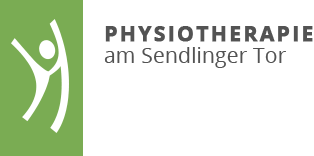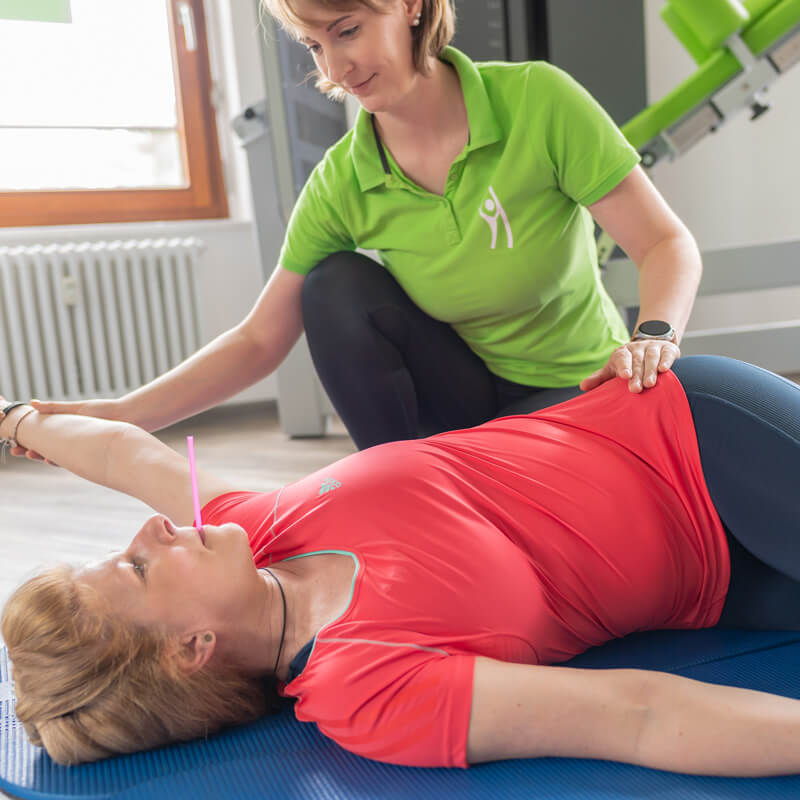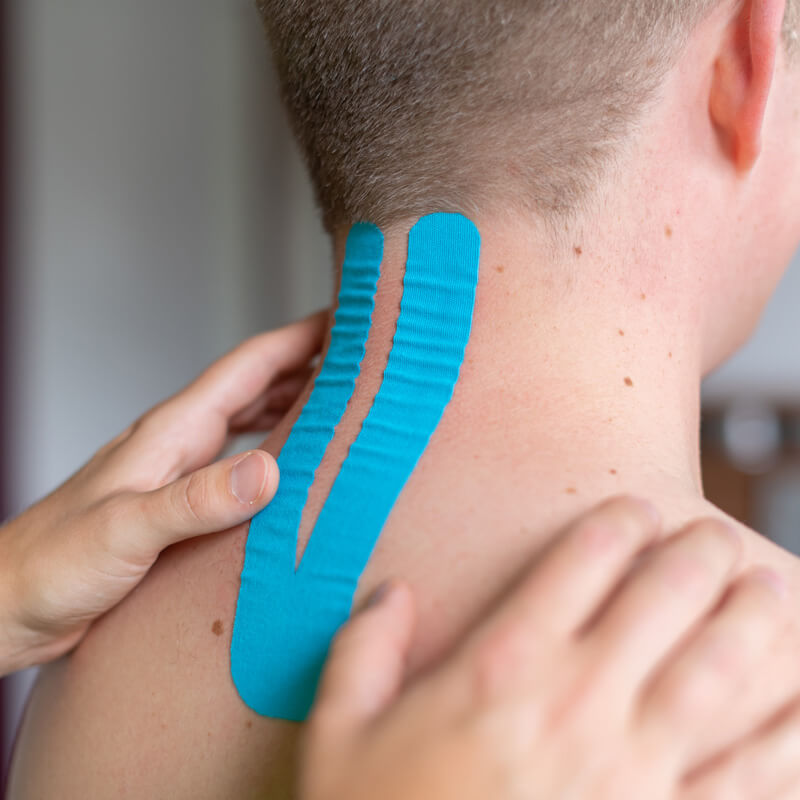
* Possible therapies
Physiotherapy in Munich:
Our services for your well-being
ø4.8/5 rated by 82 patients on Google
Respiratory therapy
Respiratory therapy is primarily used when breathing is restricted due to severe coughing and secretions. After just a few days of restricted breathing, so-called motor misbreathing can develop, which exacerbates the overall symptoms. Respiratory therapy is also useful after surgical procedures, especially if these have been performed on the thorax or abdomen. Patients with chronic obstructive pulmonary diseases such as chronic bronchitis, asthma and emphysema, as well as patients suffering from cystic fibrosis, can experience significant relief from their symptoms with the help of physiotherapeutic respiratory therapy.
Bobath therapy
Bobath is used for patients with diseases of the central nervous system. The neurological treatment concept is therefore aimed at children and adults with disorders of the central nervous system, congenital or acquired, as well as cognitive problems, sensorimotor deficits and other neurological impairments such as movement disorders caused by brain damage following a stroke.
CMD therapy
Craniomandibular dysfunction, also known as CMD, or craniomandibular dysfunction (CMD) is a temporomandibular joint disorder or a disorder of the masticatory system based on a misalignment of the jaw. CMD patients very often suffer from headaches, chewing pain, back pain, neck and shoulder tension, teeth grinding and cracking in the jaw joint, cheek hardening, restricted mouth opening, dizziness and tinnitus. This results in a significantly reduced quality of life, as you feel restricted in almost every situation in life by the symptoms.
Fascia techniques
Fasciae are soft tissue areas of the connective tissue. Fascia includes joint capsules, organ capsules, muscle septa, ligaments, tendons and tendon plates (aponeuroses) as well as the plantar fascia on the sole of the foot. Fascia techniques are part of functional manual medicine and treat dysfunctions of the connective tissue. Fasciae are essential for maintaining the structural integrity of the body and play a decisive role in the immune defense against harmful external influences (viruses, pathogens, infections). Fasciae also ensure that damaged tissue heals after injuries.
Kinesio taping
This form of physiotherapy is becoming increasingly popular and is also being used more and more frequently in our country. Kinesio taping can be used to treat muscle disorders (muscle tension, pulled muscles), tendons and the skeleton. In kinesio therapy, cotton strips around five centimetres wide (known as kinesio tapes) are stuck to the skin along the course of the affected muscles and tendons. Different colors are chosen according to kinesiology. Kinesio tapes have a reflective effect, increasing blood and lymph circulation and thus accelerating the healing process or the performance of the muscles in competition or everyday life.
Physiotherapy
What began in China over 4,000 years ago in the form of healing massages and medicinal baths has been developed and established throughout history in different countries and cultures. This gave rise to physiotherapy, which in turn gave rise to modern physiotherapy in the mid-1990s, as it is practiced and applied today. The general category of physiotherapy refers to the external treatment of movement, performance and functional disorders. If you look at the topic of holism, which is very important to us in the practice for physiotherapy and osteopathy at Sendlinger Tor, we think further and also try to weigh up whether, for example, the integration of alternative healing methods makes sense during the recovery process.
Manual lymphatic drainage
Manual lymphatic drainage, a form of physical therapy, is intended to counteract lymphostatic edema. These form when lymph vessels in certain regions of the body have insufficient transport capacity and the lymph accumulates there, and the venous system is overloaded. Manual lymphatic drainage decongests and reduces swelling in the affected extremities (arms and/or legs) by removing tissue fluid and the various substances it contains into the venous bloodstream. Lymphatic drainage as a physical therapy is particularly recommended after operations. The lymphatic system is also an important part of the human immune system. Another reason to make sure that lymph drainage is guaranteed.
Manual therapy
Manual therapy is a special form of physiotherapy based on biomechanics and reflexology and treats functional disorders of the musculoskeletal system (joint problems, muscle injuries and misdirection of impulses within the nerve tracts). It aims to mobilize the central and peripheral nervous system, muscles, capsular ligaments and joints in a physiological and pain-free manner.
Massage
Massage is one of the oldest healing methods in the history of mankind. For over 4,000 years, medical massage has been an essential constant in the world of physiotherapy to loosen up tense muscles or, in sports physiotherapy, to bring the muscles into optimal competitive tension. It is not for nothing that physiotherapy is also referred to as healing massages. Because healing is our goal.
Sports physiotherapy
Classic sports physiotherapy is not just a treatment method for professional and competitive athletes. Recreational athletes are also treated in our practice following sports injuries. The aim of sports therapy is to make the patient resilient again in the shortest possible time and thus fit for sport in a sustainable way. Sports physiotherapy can also significantly improve performance in preparation for competitions.










